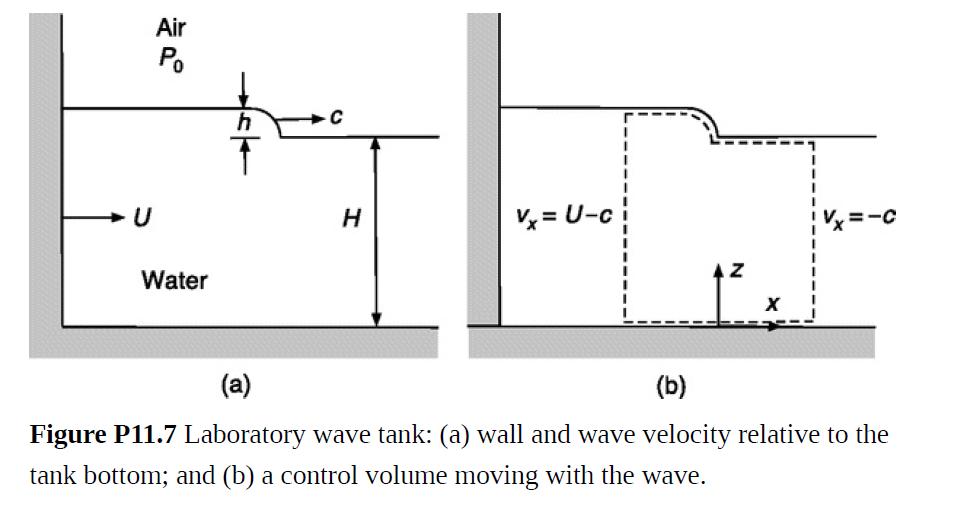A laboratory water tank designed to study wave motion is equipped with an end wall that can
Question:
A laboratory water tank designed to study wave motion is equipped with an end wall that can be moved inward at a desired constant velocity. As shown in Fig. P11.7(a), a wall velocity U creates a wave of height h and velocity c when the resting water level is H. In a reference frame fixed on the tank bottom, the horizontal water velocities behind and ahead of the wave front are vx = U and 0, respectively. A reference frame that moves with the wave is preferable, because it permits a steady-state analysis. For the control volume in Fig. P11.7(b) the wave velocity is zero, the water velocity on the left-hand side is U – c, and the water velocity on the right-hand side is –c.
(a) Relate U to c, h, and H.
(b) Assuming that the shear force on the bottom is negligible, determine c as a function of h and H.
Step by Step Answer:

Introduction To Chemical Engineering Fluid Mechanics
ISBN: 9781107123779
1st Edition
Authors: William M. Deen





